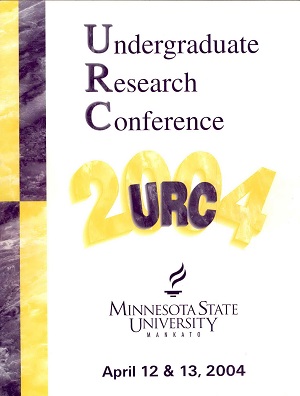Determining Star Formation History in Galaxies Using PCDM's and Pixel Maps Model
Location
CSU 253/254/255
Start Date
13-4-2004 12:45 PM
End Date
13-4-2004 2:45 PM
Student's Major
Physics and Astronomy
Student's College
Science, Engineering and Technology
Mentor's Name
Paul Eskridge
Mentor's Department
Physics and Astronomy
Mentor's College
Science, Engineering and Technology
Description
Images of galaxies taken from the Hubble Space Telescope in the Ultraviolet (U = 300nm) and Infrared (I = 814nm, H = 1600nm) wavelengths were aligned and compared to determine areas of ongoing star formation and areas with only old stellar populations. By comparing the intensity of light at different wavelengths it is possible to study the history of star formation. Only massive young stars emit strongly in the blue end of the spectrum while the red end of the spectrum is typically dominated by an old stellar population. Taking individual pixels in an image and comparing them to corresponding pixels in a different wavelength allows the creation of a pixel color-magnitude diagram (pCMD). The x-axis is a color index typically bluer minus redder (i.e. U-I) and the y axis is a magnitude scale usually in the bluer color (i.e. U). In galaxies with unresolved stars, each pixel represents a region of space within the galaxy dominated by whatever source is present in that region. The pCMD essentially breaks down the galaxy (pixels) into regions containing new structure and old structure. Separating the pCMD into regions and then plotting the pixels associated with the associated region on an x-y coordinate system produces a map of the galaxy color coded to the regions separated in the pCMD. These maps are useful tools in understanding galactic evolution and morphology. Generated pixel maps and pCMD's for selected galaxies will be presented.
Determining Star Formation History in Galaxies Using PCDM's and Pixel Maps Model
CSU 253/254/255
Images of galaxies taken from the Hubble Space Telescope in the Ultraviolet (U = 300nm) and Infrared (I = 814nm, H = 1600nm) wavelengths were aligned and compared to determine areas of ongoing star formation and areas with only old stellar populations. By comparing the intensity of light at different wavelengths it is possible to study the history of star formation. Only massive young stars emit strongly in the blue end of the spectrum while the red end of the spectrum is typically dominated by an old stellar population. Taking individual pixels in an image and comparing them to corresponding pixels in a different wavelength allows the creation of a pixel color-magnitude diagram (pCMD). The x-axis is a color index typically bluer minus redder (i.e. U-I) and the y axis is a magnitude scale usually in the bluer color (i.e. U). In galaxies with unresolved stars, each pixel represents a region of space within the galaxy dominated by whatever source is present in that region. The pCMD essentially breaks down the galaxy (pixels) into regions containing new structure and old structure. Separating the pCMD into regions and then plotting the pixels associated with the associated region on an x-y coordinate system produces a map of the galaxy color coded to the regions separated in the pCMD. These maps are useful tools in understanding galactic evolution and morphology. Generated pixel maps and pCMD's for selected galaxies will be presented.



